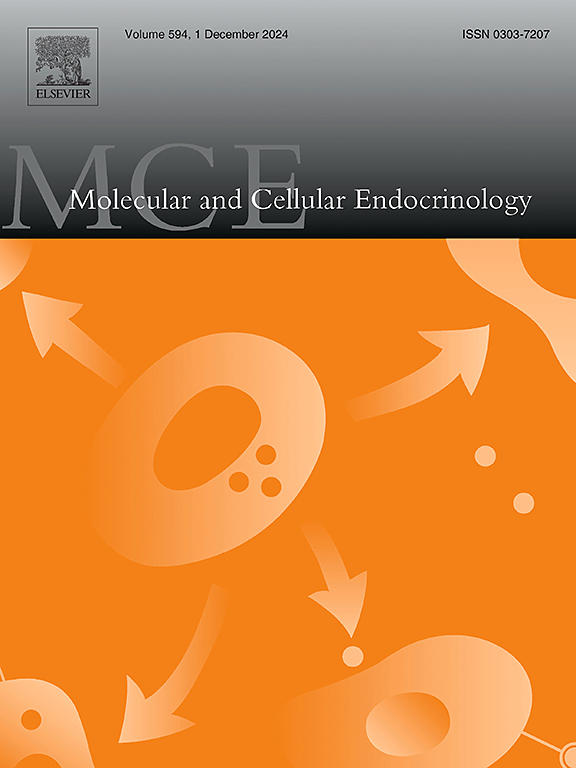奥利多宁通过抑制 NLRP3 炎症小体通路减轻糖尿病视网膜病变的进展。
IF 3.8
3区 医学
Q2 CELL BIOLOGY
引用次数: 0
摘要
奥利多宁(Ori)具有抗炎特性。然而,它治疗糖尿病视网膜病变(DR)的潜力仍不清楚。本研究旨在探究Ori的视网膜保护功能及其内在机制。在链脲佐菌素诱导的小鼠中,Ori减轻了视力损伤,减少了视网膜和血管病变,保护了神经视网膜结构,逆转了视网膜神经层增厚。此外,Ori还能降低外周血中TNF-α和IL-1β的水平,抑制视网膜NLRP3炎症相关因子。在体外,人视网膜内皮细胞(hRECs)受到高糖(HG)的刺激。HG刺激的hRECs激活了NLRP3炎性体,而Ori通过提高细胞活力和降低上清液中的IL-1β水平,显著缓解了细胞的脓毒症。Ori 还能抑制 NF-κB/NLRP3 炎性体通路。NEK7 的耗竭减轻了 NLRP3 炎性体的激活,并在一定程度上模拟了 Ori 的作用。事实上,Ori通过抑制NEK7-NLRP3的相互作用逆转了NLRP3炎性体的激活。因此,Ori可作为一种潜在的治疗药物,用于减轻DR的进展。本文章由计算机程序翻译,如有差异,请以英文原文为准。
Oridonin attenuates diabetic retinopathy progression by suppressing NLRP3 inflammasome pathway
Oridonin (Ori) possesses anti-inflammatory properties. However, its potential to treat diabetic retinopathy (DR) remains unclear. This study aimed to investigate the retinal protective function of Ori and the underlying mechanism. In streptozotocin-induced mice, Ori alleviated visual impairment, reduced retinal and vascular lesions, protected the neuroretinal structure, reversed retinal nerve layer thickening. Addtionnally, Ori reduced TNF-α and IL-1β levels in the peripheral blood, and suppressed retinal NLRP3 inflammasome-related inflammatory factor. In vitro, human retinal endothelial cells (hRECs) were stimulated by high glucose (HG). HG-stimulated hRECs activated the NLRP3 inflammasome, whereas Ori significantly alleviated pyroptosis by enhancing cell viability and reducing IL-1β levels in the supernatant. Ori also inhibited NF-κB/NLRP3 inflammasome pathway. NEK7 depletion alleviated NLRP3 inflammasome activation and, to some extent, mimicked the role of Ori. Indeed, Ori reversed NLRP3 inflammasome activation by suppressing NEK7–NLRP3 interaction. Therefore, Ori may serve as a potential therapeutic agent for attenuating DR progression.
求助全文
通过发布文献求助,成功后即可免费获取论文全文。
去求助
来源期刊

Molecular and Cellular Endocrinology
医学-内分泌学与代谢
CiteScore
9.00
自引率
2.40%
发文量
174
审稿时长
42 days
期刊介绍:
Molecular and Cellular Endocrinology was established in 1974 to meet the demand for integrated publication on all aspects related to the genetic and biochemical effects, synthesis and secretions of extracellular signals (hormones, neurotransmitters, etc.) and to the understanding of cellular regulatory mechanisms involved in hormonal control.
 求助内容:
求助内容: 应助结果提醒方式:
应助结果提醒方式:


